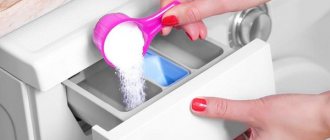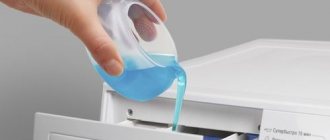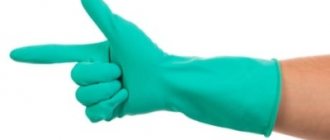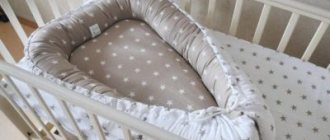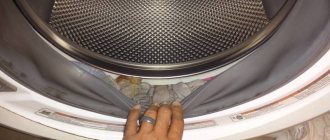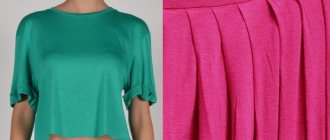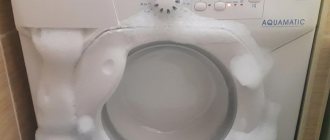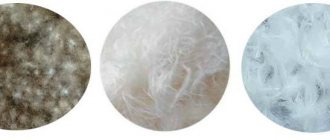Increasingly, experienced housewives are choosing washing gel instead of traditional washing powders. And it’s clear why: the gel-like product dissolves faster in water, has a gentler effect on fabric fibers, preserving their structure and color, is environmentally friendly in composition, and is economical in consumption.
When buying washing gel, it is very important to familiarize yourself in advance with information about how, where exactly and how much detergent you need to pour in order to get perfectly washed clothes.
Which compartment should I fill it in?
Before washing with gel in the washing machine, you need to understand where to pour the detergent. The powder receptacle of each machine has three compartments, marked with a Roman numeral or letter. As a rule, the largest cuvette is designated “B” or “II”, is used by the system during the main cycle and is used for dry and liquid concentrates. The central, smallest compartment is marked “*”, “C” or “III” and is allocated for conditioners, rinse aids and antistatic agents. The middle hopper “A” or “I” is only required for the prewash program.
It is logical that the washing gel must be poured into the compartment for the main wash - this way the product gets into the tank at the right time and will stay there long enough. You cannot use the cuvette for conditioner: it only drains when rinsing. Bunker “A” is also prohibited, since it is not listed without a special program.
Before adding the gel to the machine, read the factory instructions - the manufacturer indicates all the nuances and guidelines in it.
The location, shape and purpose of the powder receptacle compartments also depend on the specific model of the washing machine. For some brands the difference is quite noticeable.
- The detergent tray is divided into three bins with standard markings. But the instructions indicate that gels and liquid concentrates are poured strictly into a cuvette with a special shutter. It is always located in the center.
- Bosch. Of the three compartments in the powder receptacle for liquids, the compartment marked “B” or “II” is best suited.
- Washing machines of this brand have a separate compartment for liquid products, complemented by a special dispenser. Thus, the gel enters the drum in parts, ensuring complete washing.
- A distinctive feature of Hotpoint models is the semicircular powder receptacle. Despite the non-standard shape, the gel is added to the washing machine according to the standard pattern: the largest compartment is on the far right side.
- Atlanta machines have an additional cuvette for bleach. But before adding the product, you need to insert a special valve.
- It offers a “smart dosing” function. Thanks to it, the system automatically calculates the required amount of powder or gel depending on the activated washing program and the loaded laundry. There is also an additional special tray for helium capsules.
In order to correctly pour the liquid concentrate into the powder receptacle, you must first study the factory instructions. In it, the manufacturer indicates which compartment is suitable for the gel, whether a shutter is needed and how to correctly calculate the dosage.
How to wash?
If you are not sure that all the designations are understood correctly, or they have simply been erased, then you can figure out what’s what experimentally. To do this, turn on an empty, unloaded washing machine in the no-soak mode. The detergent compartment does not need to be completely closed. The compartment into which the water supply will go first will be intended for powder. Opening the container during operation will not damage the unit. This feature can be used to add rinse aid while the wash is already running.
To put things in order, they act in this way.
- Heavily soiled laundry requires soaking. Therefore, fill cells “1” and “2” with powder, and if desired, add conditioner to the compartment with an asterisk or flower.
- If only the main wash is needed, but with a softener, then the product is poured only into compartment “2”. Rinse aid is poured into the small one.
- When a simple wash is needed, only the second cell is used.
Dispenser container
If the washing machine does not allow adding gel to the powder receptacle, then you can go the other way and use a dispenser container. This is a special plastic “box” with holes that is filled with detergent and placed in the drum. Afterwards, the liquid gradually leaves the “capsule”.
The dispensing container has several advantages:
- the gel begins to dissolve as soon as the drum is filled with water;
- the product comes out in portions, which makes the washing quality;
- the concentrate dissolves completely and does not remain on the walls of the powder receptacle;
- contact between chemicals and clothing is eliminated, which allows you to safely wash delicate fabrics, wool and silk.
If there is no special dispenser, you can pour the gel directly into the drum. Some concentrates, characterized by a safe natural composition, are added directly to clothing, as indicated by the corresponding note in the instructions. However, not all fabrics “like” contact with chemicals, so it’s better not to take risks: throw the liquid at the bottom of an empty tank, rinse with water, and then load things.
Everything for effective washing: the best brands
There are quite a lot of formulations under consideration now on sale. The most popular and proven means:
- "Tide";
- "Persil";
- "Ariel";
- "Frosh";
- "Gloss";
- "Eared nanny."
Modern detergents do an excellent job of removing stains, leaving an unobtrusive odor, and do not damage the fabric. Before washing with Ariel liquid powder, you should pay attention to the fact that you do not need to add any additional softening or bleaching agents. The composition of this brand is created for effective cleansing and at the same time making laundry soft. The bottle has a special cap, thanks to which you can dose the product correctly and pre-clean fabric products.
By choosing Persil, you can be sure that there are no undissolved traces of the composition on clean linen, as well as giving things a subtle aroma and pleasant freshness. The gel penetrates deeply into the fibers, effectively washing away even difficult stains. The positive thing is that contaminants are removed by Persil even at a minimum temperature of 30 degrees and at the first stage of cleaning.
The positive aspect of how to wash with liquid Tide is the possibility of using it in almost any machine. The high quality of cleansing has been noted by many housewives, and the product consumption is minimal. In addition, the “Ushasty Nyan” detergent composition, designed for gentle cleaning of children’s products and bedding, is popular. Suitable for any type of washing, including hand washing. Perfectly removes biological stains, as well as stubborn fruit, grass, blood and chocolate stains. The product is clinically tested and does not cause skin irritation or allergies. It contains a complex that preserves the colors of products and gives softness to the material. Modern washing concentrates are designed to make washing easier and keep clothes attractive for a long time.
Consequences of improper use of the gel
It is no coincidence that washing machine manufacturers prescribe recommendations for the use of liquid detergents. If you mix up the powder receiver compartments and pour the concentrate in the wrong place, the owner will not be happy with the consequences . Such an error will lead to poor quality washing and rinsing:
- the product will not get into the drum, things will remain dirty if you pour the gel into the pre-wash compartment;
- things will be dirty and soapy if you add liquid to the conditioner compartment, since the product will begin to be withdrawn during the rinse stage.
Correcting the error is easy: just turn on the pre-wash program or run a second rinse. However, it is better not to waste time and product in vain, but to immediately pour it into a specially provided compartment.
Do not exceed the dose
Gel detergents foam well, dissolve and are washed out of fabric, but only if the correct dosage is observed. The amount of gel to be poured depends on the type of fabric, stains, weight of the laundry and the liquid itself: detailed recommendations are indicated on the packaging. You cannot exceed or underestimate the prescribed norm, otherwise things will not be washed completely or will remain soapy.
Follow the dosage of the gel!
As a rule, a standard full load of the machine requires about 150 ml of regular gel. If the product has a concentrated composition, then the consumption will be more economical: 75-80 ml per cycle.
Nuances of using the gel
In order for washing with gel to be as gentle and effective as possible, it is necessary to take into account not only the manufacturer’s recommendations, but also the advice of experienced housewives. There are several rules for using liquid detergents, if followed, you can achieve an ideal result. We are talking about the following nuances:
- You cannot pour the gel into several compartments of the powder receptacle at once - an excessive amount of product will worsen the quality of the wash;
- It is recommended to dilute thick formulations slightly with water so that the gel is better washed out of the cuvette and does not remain on the walls of the tray;
- gels with an active bleaching composition cannot be poured into the drum on things - aggressive components will damage the fibers, white spots and streaks will remain on the fabric;
- It is forbidden to combine powder and gel, as an unexpected chemical reaction is possible;
- Old stains must be soaked before washing, since the soft action of the gel is not able to quickly remove strong dirt.
It is important and responsible to choose a gel. The modern market offers hundreds of items with different compositions, so it’s better to start your search by studying reviews. There is no need to save money - a good concentrate is not cheap, but it uses less and washes faster.
Pros and cons of gel?
Like any detergent, the gel has both pros and cons. To appreciate the value of washing liquid, you need to familiarize yourself with the list of both pros and cons. Let's start with the advantages of which the concentrate has many times more:
- Easily rinses out of fabric without leaving stains or streaks;
- penetrates faster into the fiber structure, pushing out dirt from the inside;
- has sealed packaging;
- easy to dose with a cap;
- less allergenic;
- does not remain on the walls of the tray and drum;
- often has a combined composition (conditioner, softener and bleach in one);
- “works” in cold water;
- is used sparingly;
- effective against protein stains;
- does not wash away moisture-proof impregnation from things.
The gel also has disadvantages: high price and short shelf life. The liquid also removes old stains and oil worse. But for everyday washing, the liquid concentrate is ideal - it refreshes and softens without damaging the fabric.
Interesting:
- Where to pour and how to use liquid powder
- Where to put the powder in the Ardo washing machine?
- Where to pour liquid powder in the Atlant washing machine?
- Where to pour liquid powder in the Indesit washing machine?
- Where to pour powder in a Bosch washing machine
- Where to pour liquid powder in an LG washing machine?
Reader comments
- Share your opinion - leave a comment
Composition of liquid washing powder
Such washing powders are similar in composition to dry ones. The difference is only in the quantity of certain components. Let's list the main ones:
- Surfactants (surfactants) are the main component. Their task is to help water molecules penetrate the fibers and, by weakening the connection with dirt particles, promote separation. Compared to dry powders, liquid powders contain slightly higher surfactant content.
Do you turn off the water tap after washing?Oh yes! No.
- Enzymes are molecules that catalyze the breakdown of organic substances - food, blood, etc. In too hot water they disintegrate and lose their functions. Therefore, it is not recommended to use at temperatures above 60 degrees.
- Phosphates. These substances should be no more than 5% in the composition, because they are poisonous. The purpose of phosphates is to soften water and increase the effectiveness of surfactants. If the water contains few salts, then you should choose products without them.
- Optical brighteners. The most common among them is titanium dioxide. After rinsing, particles of this substance linger on the surface and give the item a slightly bluish tint. In this form, titanium dioxide is not dangerous.
- Fragrances. You can't do without them. They are used to give things a scent. Some laundry detergents do not contain fragrances.
- Foam stabilizers inhibit their excessive formation.
- Polymers are necessary to protect the fibers from color loss.
- Disinfectants.
- Ballast capable of maintaining the operating properties of components.
Pouring liquid powder
